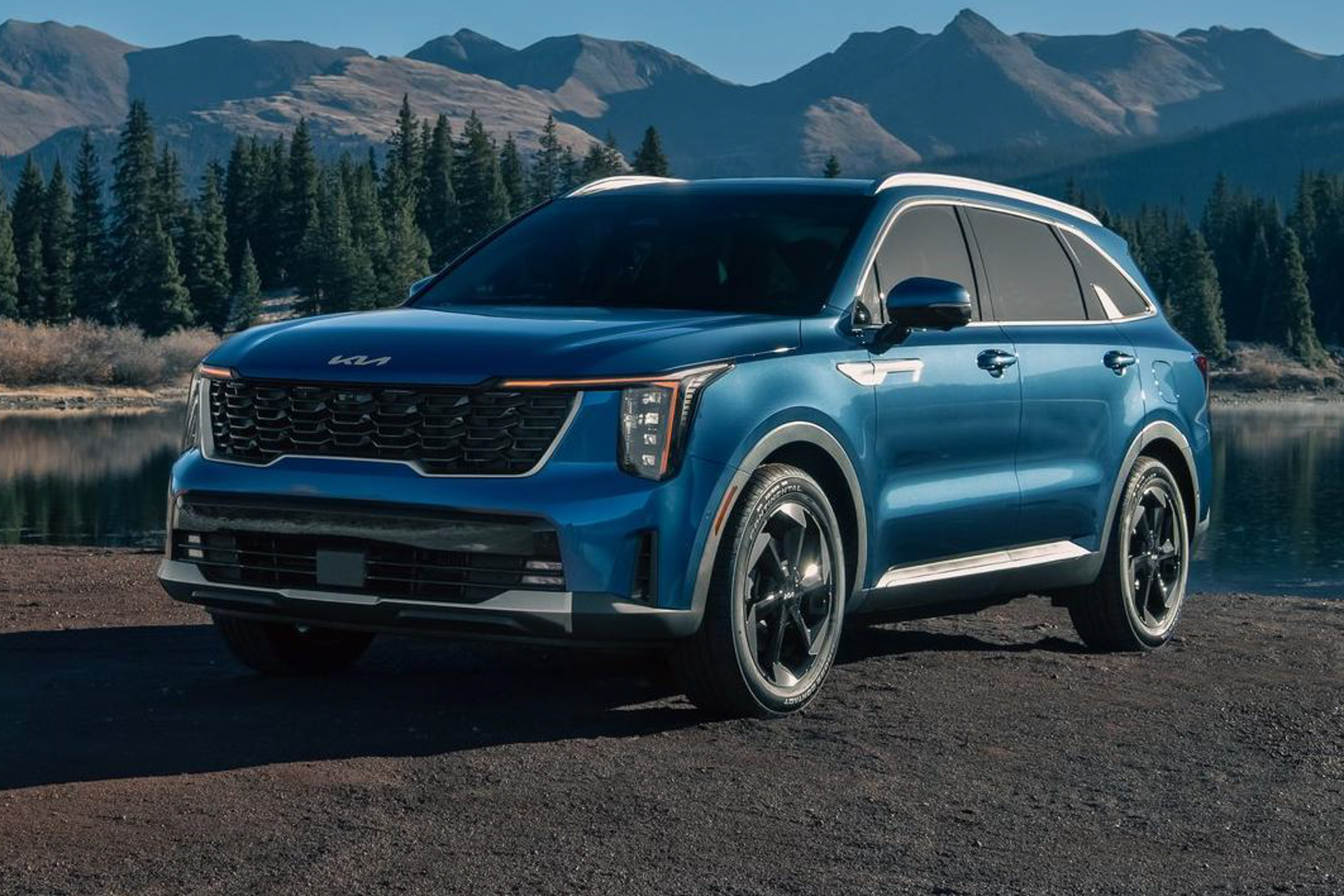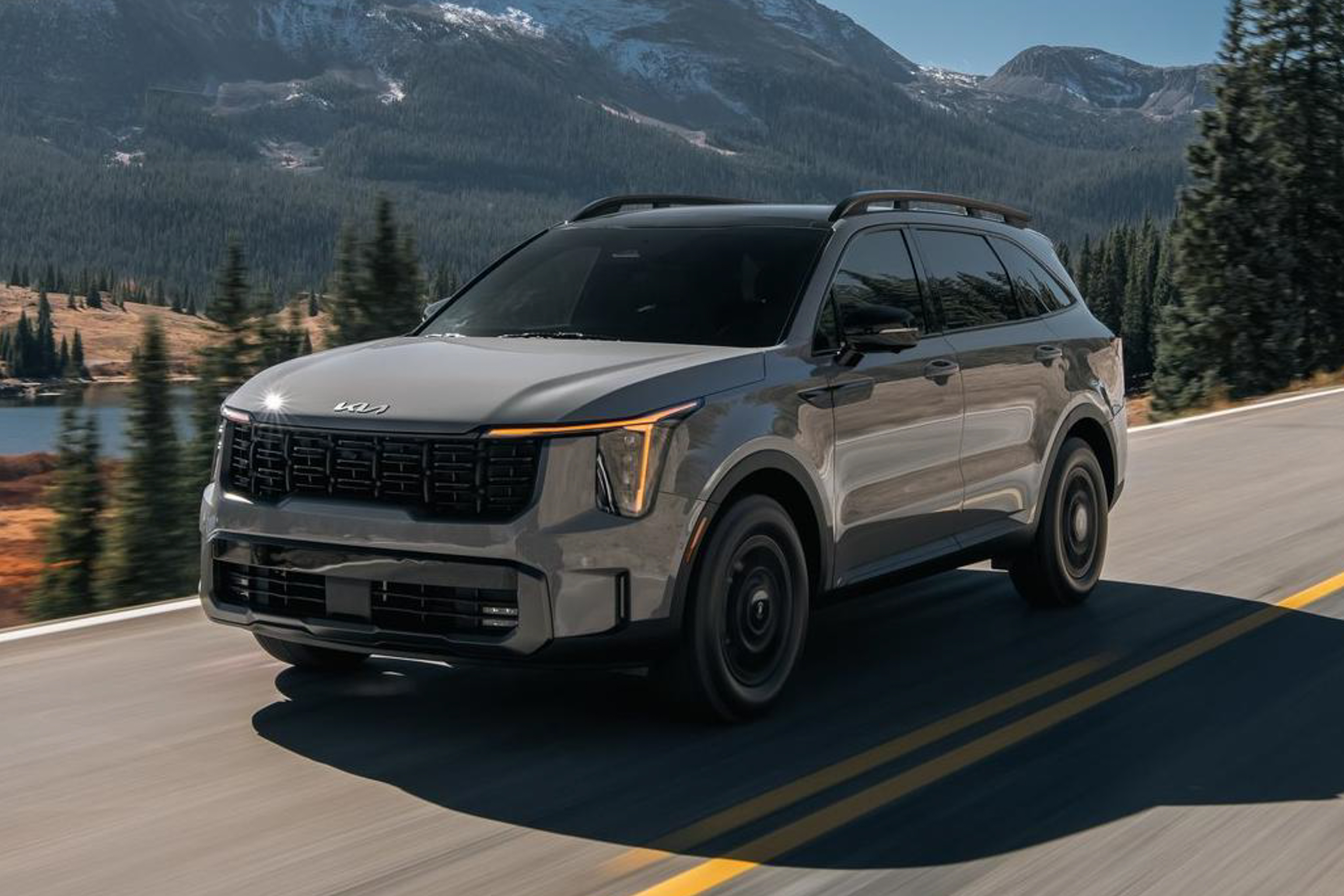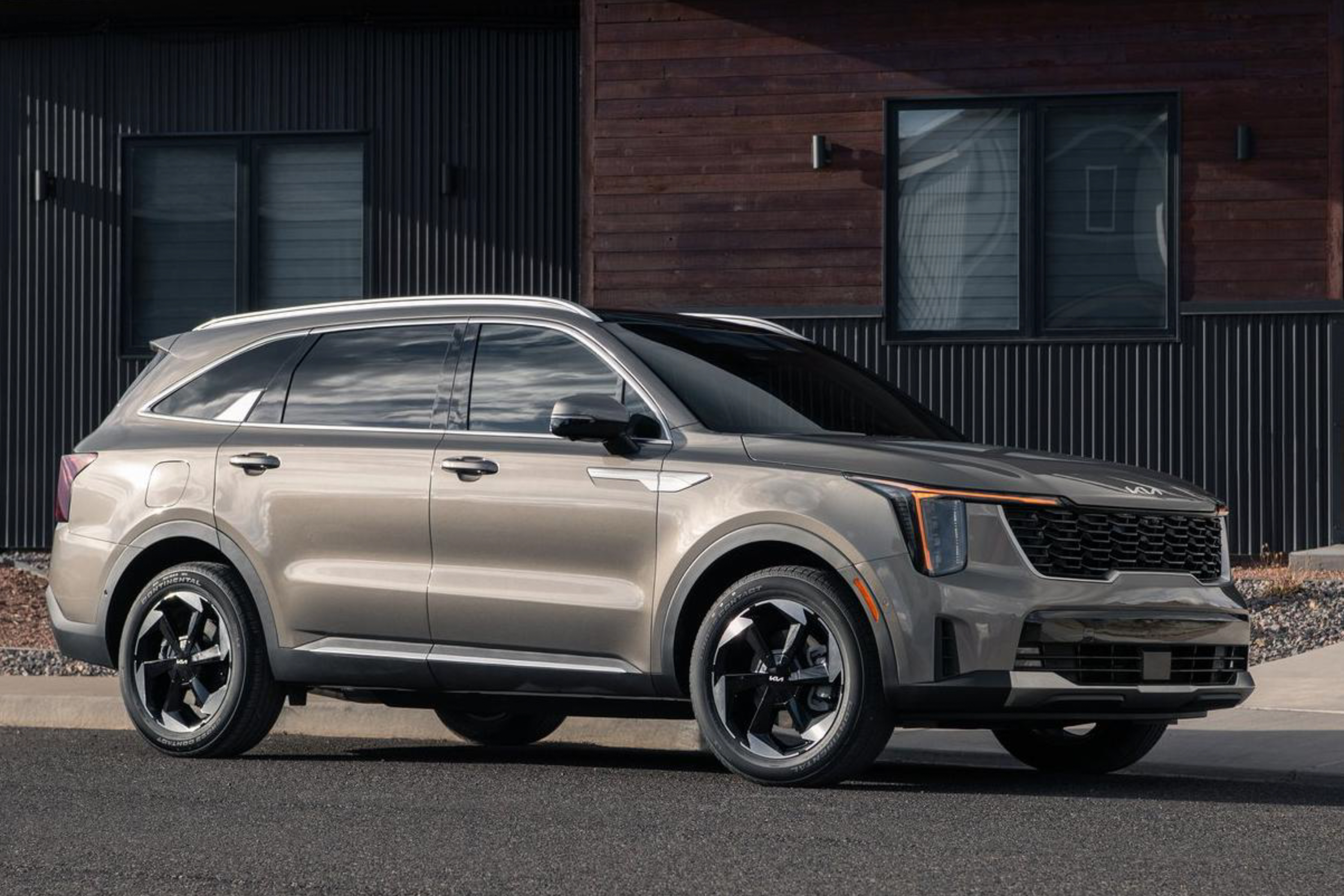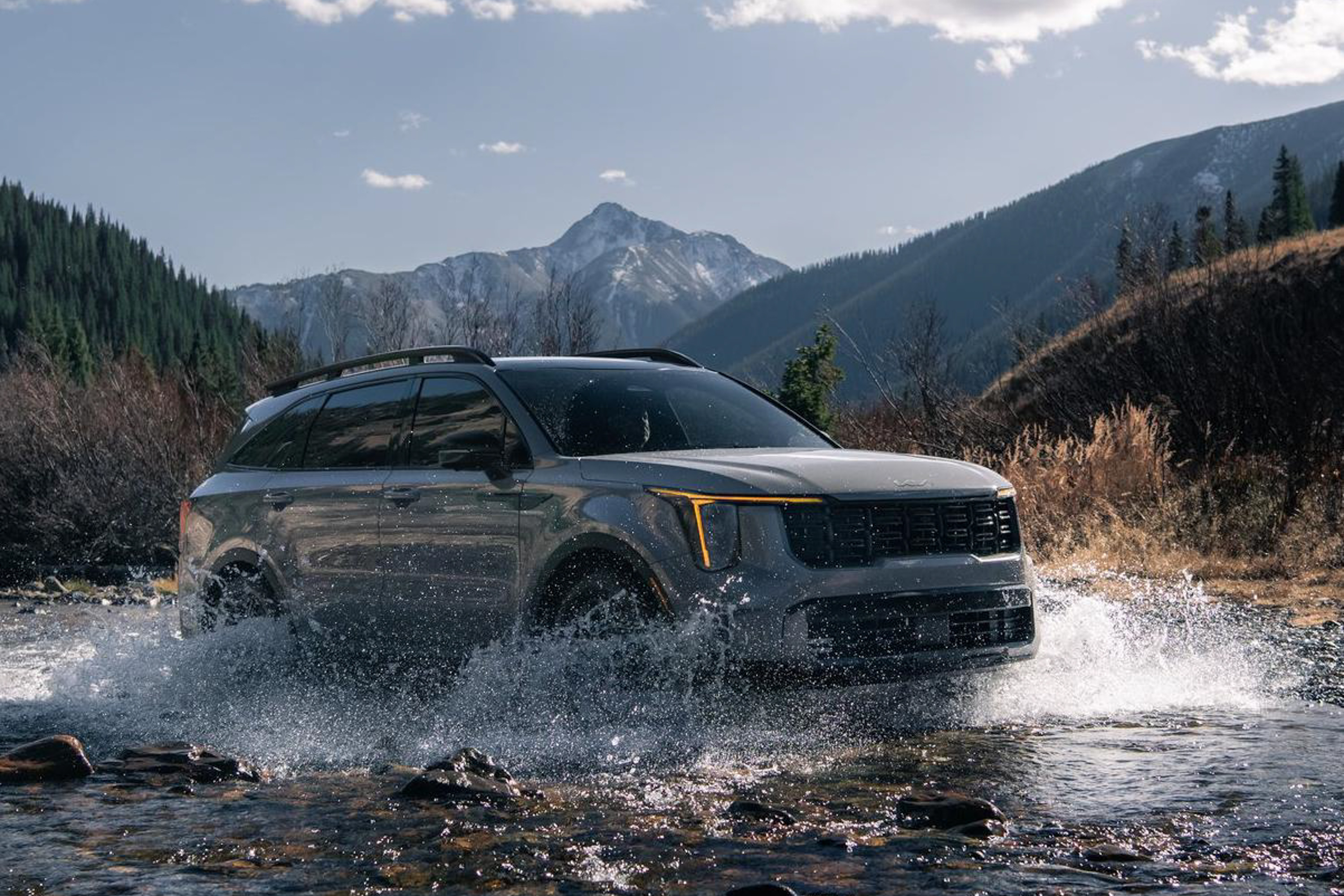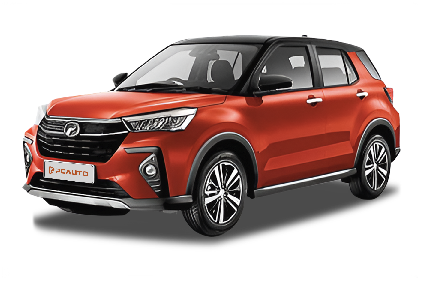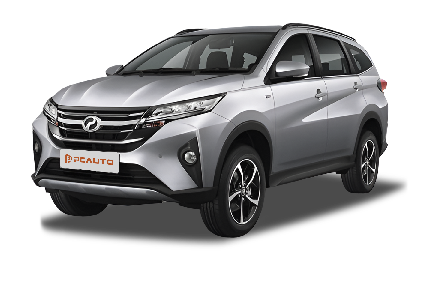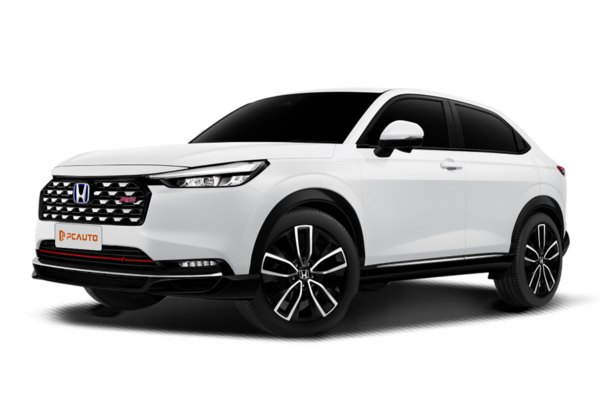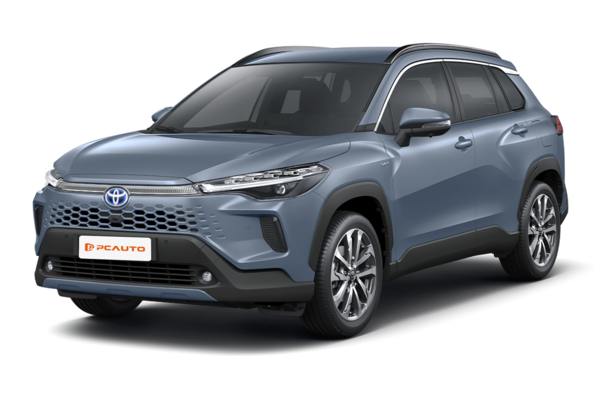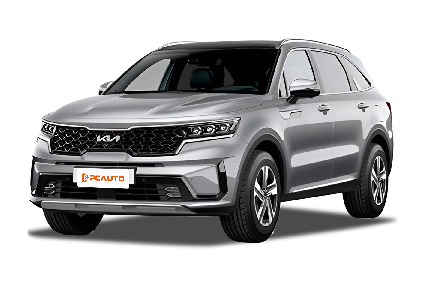Q
What is the fuel tank capacity of the Kia Carnival 2022?
The 2022 Kia Carnival comes with a 72-liter fuel tank, placing it in the upper-middle range among its MPV competitors. This capacity is well-suited for long-distance trips or family outings, minimizing those annoying fuel stops. For practical, spacious vehicles like MPVs—especially when you're regularly hauling the whole family—a generous fuel tank is a big plus.
Beyond tank size, the 2022 Carnival also features an efficient fuel system, with solid official fuel economy figures. In real-world driving, maintaining a smooth driving style can stretch a full tank quite far. When shopping for an MPV, don’t just focus on fuel capacity—safety features, ride comfort, and maintenance costs all play a role in day-to-day usability. If you frequently transport passengers or rack up highway miles, the Carnival is a practical pick, offering plenty of space and balanced fuel efficiency.
Q
How much oil is in a 2022 Kia Carnival?
The 2022 Kia Carnival’s oil capacity varies by engine type. The 3.5L MPI gasoline engine typically takes around 5.7 quarts (including filter replacement), while the 3.5L GDI turbocharged version requires roughly 6.5 quarts. Always double-check your owner’s manual or the dashboard oil-life monitoring system for exact specs.
A heads-up: The amount can slightly vary depending on how thoroughly the old oil was drained during service. Too much oil? You risk higher crankcase pressure. Too little? Poor lubrication. Stick with full synthetic 5W-30 oil meeting API SP or ACEA C2/C3 standards—it handles tropical climates better.
When checking the oil level, park on level ground, wait 10 minutes after shutting off the engine, then pull the dipstick, wipe it, reinsert, and check. The level should sit between MIN and MAX. Noticing excessive consumption—say, over 0.5 quarts per 3,000 miles? Get those seals or piston rings inspected ASAP.
Pro tip: If you’re mostly doing short trips or heavy stop-and-go driving, consider shortening the oil-change interval to every 3,000 miles to keep the engine in top shape.
Q
What kind of engine is in the Kia Carnival 2022?
The 2022 Kia Carnival is powered by a 2.2-liter CRDi turbocharged diesel engine, featuring modern high-pressure common rail fuel injection technology. This setup delivers impressive fuel efficiency and strong low-end torque, with a max output of 202 horsepower and 440 Nm of peak torque. Paired with an 8-speed automatic transmission, it ensures smooth power delivery whether you're navigating city streets or cruising on the highway.
Diesel engines remain popular in the local market, thanks to their high-torque character—ideal for long-distance driving or hauling heavier loads—plus the added perk of diesel being more budget-friendly than petrol. To meet stricter emissions regulations, this engine also comes equipped with an exhaust gas recirculation system and a diesel particulate filter.
For families prioritizing practicality and fuel economy, this powertrain is a solid pick. And with Kia backing it up with an extended warranty, buyers can feel even more confident in their choice.
Q
What is the fuel consumption of the Kia Carnival 2022?
The 2022 Kia Carnival's fuel efficiency varies depending on powertrain options and driving conditions. Equipped with a 3.5L V6 gasoline engine, it delivers an estimated combined fuel consumption of around 10-12L/100km. The more economical 2.2L diesel variant achieves approximately 7-8L/100km in mixed driving—though real-world figures may fluctuate based on driving habits and road conditions.
This MPV benefits from Hyundai-Kia's Smartstream technology, which optimizes combustion efficiency and reduces mechanical friction to strike a balance between fuel economy and performance. Whether for long family trips or daily urban commutes, it holds its own.
To maximize efficiency, maintain smooth acceleration, utilize cruise control wisely, and stick to regular maintenance—like timely air filter and spark plug replacements. If cross-shopping, competitors like the Toyota Innova and Honda Odyssey offer comparable fuel economy, but your final choice should weigh factors like cabin space, features, and power delivery.
Q
How much does a 2022 Kia Carnival cost?
The 2022 Kia Carnival's price varies depending on trim levels, with the base model starting around RM 170,000 to RM 180,000, while the top-spec variant could go up to approximately RM 220,000. Final pricing may differ due to dealer incentives or optional add-ons.
This MPV stands out with its spacious cabin and family-friendly features, like versatile seating arrangements and advanced safety tech—making it a solid pick for buyers who prioritize practicality and comfort. In the local market, it goes head-to-head with rivals like the Toyota Innova and Honda Odyssey, but the Carnival’s sharper design and higher equipment levels give it an edge.
If you’re considering one, shop around for the best dealer offers—keep an eye out for promotions or financing deals. Also, don’t overlook lightly used models in the pre-owned market; you might snag a well-maintained Carnival at a more attractive price.
Q
How long will a 2022 Kia Carnival last?
The durability of the 2022 Kia Carnival largely depends on driving habits and maintenance. Under normal conditions, this MPV can easily clock 200,000 to 300,000 kilometers or more—provided you stick to scheduled servicing and drive responsibly.
Kia's got the formula right with the Carnival: proven powertrains and a solid body structure, paired with either a 2.2L diesel or a 3.5L gasoline engine—both known for steady, long-lasting performance. Plus, it packs a suite of active safety tech to keep things secure on the road.
For maintenance, stick to the 10,000 km or 6-month intervals (whichever comes first). Regular oil changes, air filter replacements, and thorough checks on brakes and suspension components will go a long way in extending its lifespan. Since the Carnival’s tuned for comfort (typical MPV style), it’s great for families—but avoid chronic overloading to prevent unnecessary strain on the suspension.
Don’t sleep on the tech side, either. Keep the infotainment system updated to avoid glitches. With proper care and no reckless driving, this thing can easily last a decade or longer. And here’s the kicker: always opt for genuine parts and authorized service centers—it’s the smartest way to keep the Carnival running smoothly for years.
Q
How much does a Kia Carnival 2022 cost?
The 2022 Kia Carnival is priced between approximately RM160,000 to RM200,000 depending on trim levels, with possible variations due to dealer promotions or optional accessories. The base model comes with either a 2.2L diesel or 3.5L V6 petrol engine, featuring standard 8-seater layout, a 12.3-inch touchscreen, and smart driving assistance systems. Higher trims add premium features like power sliding doors, a panoramic sunroof, and leather seats.
This MPV stands out for its spaciousness and comfort—the third-row seats fold flat to create ample cargo space, making it ideal for families. Key rivals include the Honda Odyssey and Toyota Alphard, though the Carnival holds an edge in value for money.
Before buying, we’d recommend test-driving at an authorized dealership and checking the latest promotions. Comparing insurance and loan options can also help reduce ownership costs. The warranty typically covers 5 years or 150,000 km, but always confirm details with official sources.
Q
What is the safety rating of the 2019 Kia Sportage?
The 2019 Kia Sportage delivers solid safety performance, earning a 5-star Euro NCAP rating – Europe's top crash test benchmark. This top score reflects its well-rounded protection across all four key areas: adult occupant safety, child protection, pedestrian safeguards, and advanced driver assistance systems.
You'll find plenty of tech working to keep you safe on the road, like forward collision warning with automatic emergency braking, lane-keeping assist, and blind-spot monitoring – features that make a real difference in everyday driving. The body structure also uses high-strength steel to better absorb impact energy. For safety-conscious buyers, these specs and the 5-star rating carry serious weight.
That said, while crash test scores matter, remember that real-world safety still comes down to driver awareness and road conditions. Always keep up with routine maintenance and stick to traffic rules – that's how you get the most out of Sportage's safety package.
Q
Is the 2022 Kia Carnival a good car?
The 2022 Kia Carnival is a well-rounded MPV that's particularly ideal for family use, delivering strong performance in space, comfort, and tech features. It offers a three-row seating layout with surprisingly roomy third-row space—enough for adults—plus decent cargo capacity for daily needs. The cabin uses high-quality materials with a premium feel, featuring a responsive 10.25-inch touchscreen supporting both Apple CarPlay and Android Auto. Under the hood, you get a choice between a 2.2L diesel engine (great fuel efficiency for long hauls) or a punchier 3.5L gasoline unit. Safety tech like smart cruise control, lane-keeping assist, and blind-spot monitoring keeps it competitive in its class.
MPVs are gaining traction locally for their blend of practicality and comfort, making them a smart pick for larger families or frequent group travel. If you’re after a spacious, feature-packed people-hauler, the Carnival deserves a spot on your shortlist—though it’s always worth cross-shopping rivals to match your specific needs.
Q
Are there any recalls on the 2019 Kia Sportage?
The 2019 Kia Sportage was subject to global recall campaigns addressing potential safety concerns, notably fuel pump failures that could cause engine stalling during operation, and ESC software glitches affecting brake assist functionality. Owners can check their vehicle's recall status by entering the VIN on the official website or contacting authorized service centers to confirm whether locally sold models are involved.
These recalls represent standard proactive measures by automakers to mitigate risks. Hyundai Motor Group typically notifies affected customers via SMS or email for complimentary repairs.
We recommend routinely checking tire pressure, brake pad wear, and other basic maintenance items while staying alert to dashboard warning lights—any unusual indicators warrant immediate inspection. If you have concerns about your vehicle's condition, request a full diagnostic scan from your dealership; some even offer complimentary safety check events.
Sticking to scheduled maintenance not only helps identify potential issues early but also ensures you receive timely recall updates, as implementation timelines may vary by region. Always verify your specific model's status, as regional recall specifics can differ.
